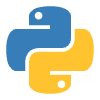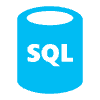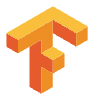Data Scientist Freelance Profiles: What to Look for Before Contacting

Data Scientist Freelance Profiles: What to Look for Before Contacting
Why Data Scientist Freelance Profiles Matter
1. Market Expansion
2. Impact on Project Results
What Is a Data Scientist’s Core Skill Set
1. Technical Foundations
2. Analytical Mindset
3. Communication Edge
Key Portfolio Elements That Stand Out
1. Diverse Case Studies
2. Detailed Results
3. Public Repositories
Steps to Evaluate Profiles Before You Reach Out
1. Look for Relevant Industry Mention
2. Review Testimonials
3. Ask for Work Samples
4. Note Communication
Common Oversights That Lead to Bad Hires
1. Tunnel Vision on One Skill
2. No Defined Project Scope
FAQs about data scientist freelance profiles
What is the hourly rate for a freelance data scientist?
What is a good bio for a data scientist?
How to find freelance work as a data scientist?
How do I prepare for data science profile?
Moving Forward With Confidence
Data Scientist Freelance Profiles: What to Look for Before Contacting
Why Data Scientist Freelance Profiles Matter
1. Market Expansion
2. Impact on Project Results
“Every time I skip the profile deep dive, I pay for it later. Sometimes in bugs, sometimes in backpedaling.” 💻
What Is a Data Scientist’s Core Skill Set
1. Technical Foundations
“If a profile says ‘proficient in Python’ but doesn’t mention what libraries they’ve used it with, I assume it’s surface-level.” 🧪
2. Analytical Mindset
3. Communication Edge
“I once hired someone because their profile said: ‘I explain neural nets to people who don’t care about neural nets.’ That’s the bar.” 🧠💬
Key Portfolio Elements That Stand Out
1. Diverse Case Studies
“If every case study is about Kaggle or Titanic data, I assume they haven’t worked with real clients.” 🧊
2. Detailed Results
3. Public Repositories
“I once opened a repo that said ‘final_final_really_final_model.ipynb’ — and closed it just as fast.” 😅
Steps to Evaluate Profiles Before You Reach Out
1. Look for Relevant Industry Mention
“If a freelancer says they’ve worked with HL7 or FHIR, I know they’ve touched real health data—not just synthetic CSVs.” 🩺📊
2. Review Testimonials
“Every 5-star review says ‘excellent work’—but the ones that mention late nights or scope changes are the ones I pay attention to.” 😅
3. Ask for Work Samples
“I once got a ‘demo’ that was just a JPG of a Streamlit app. That was the end of that thread.” 📸🚫
4. Note Communication
“The fastest way to filter? Ask a small question about your use case. If the reply is generic, move on.” 🧭
Common Oversights That Lead to Bad Hires
1. Tunnel Vision on One Skill
2. No Defined Project Scope
FAQs about data scientist freelance profiles
What is the hourly rate for a freelance data scientist?
“I’ve seen a freelancer charge $150/hr for a forecasting model, then pivot to $95/hr for a dashboard build. Same person, different context.” 💸
What is a good bio for a data scientist?
“If it reads like a LinkedIn summary from 2012, it’s probably not helping.” 😬
How to find freelance work as a data scientist?
“My first freelance gig was a $500 notebook cleanup. Two years later, that client still sends me work.” 🧹➡️📈
How do I prepare for data science profile?
“Your profile should answer the question: ‘If I give this person data, can they tell me something useful and deliver it in my format?’” 🧠📊
Moving Forward With Confidence
Posted Apr 15, 2025
Data Scientist Freelance Profiles: What to Look for Before Contacting. Learn how to assess skills, portfolios, and communication before reaching out.











